Best cheap microphone for streaming and gaming
The best cheap microphones don't always have to sound worse than their expensive counterparts. The times of drab, crackly audio may well be over, even for sub-$100 mics. These days, you can grab even a $50 microphone, plug it into your laptop, and record a great-sounding podcast that'll blow your listeners away.
Some even come with multiple polar patterns, though most will be stripped of the fancier features. Over the past couple of years, popular microphone makers have offered budget-friendly configurations for gaming, recording, and streaming that sound amazing.
So, how can a $40 mic compete with some of the best microphones that could cost up to $300? The cheaper mics, while sounding great, are stripped of even the most basic features to keep costs low. Things like volume, gain control, or even a mute button is nowhere to be seen on the microphone, which requires you to do any audio tweaking through third-party software like OBS or Xsplit.
Despite the cheaper price point, it doesn't change how we test these microphones. We still follow the same testing criteria as the more expensive mics; all we did was add a $100 max budget. We are still looking for excellent sound quality, form factor, usability, and build quality.
Best cheap microphone for streaming and gaming
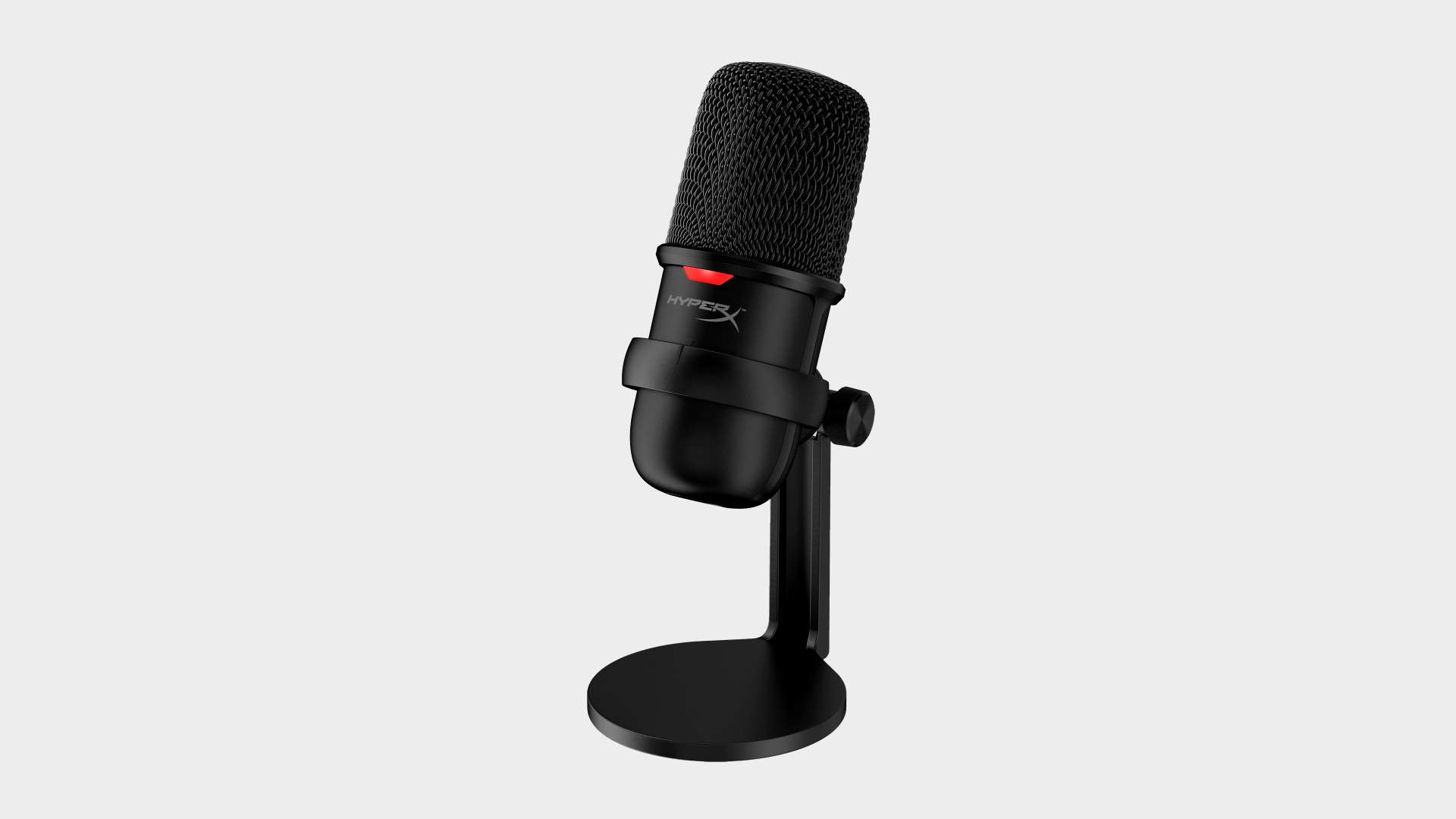
he new HyperX SoloCast microphone is all about delivering what's most important: higher-fidelity voice recording for gamers on a budget. For less than $60 you're really paying for the portability and ease of use.
As far as sound quality is concerned, you usually get what you pay for, but the HyperX SoloCast is seems to take a 'sound over anything else' approach. Essentially, HyperX seems to has stripped down one of its QuadCast mics down to the bare essentials. It's missing a headphone jack, gain control, shock mount, internal pop filter, and I won't lie; I miss the RGB lighting. But even though it's less flashy than HyperX's other mic offerings, the sound quality is incredible for the price.
When comparing the $160 HyperX Quadcast S, the sound quality is scarily similar when using cardioid mode across both. Both mics have a 20Hz-20kHz frequency response and a 16-bit sample rate. The SoloCast only has the single cardoid polar pattern, as opposed to the four that's offered on the QuadCast mics.
Without gain control you cant regulate the gain on the fly, which is awkward as it sounded a bit too hot out of the box. Changes need to be done on the software level, but the ease of set up is great.
While the JLab Audio Talk GO and Razer Seiren Mini also offer great sound, the HyperX SoloCast still reigns as the king of budget microphones, giving us the audio chops of its own pricier QuadCast S compatriot but for a fraction of the price.
The SoloCast opts for a pill-shaped design that sits at roughly half the size of the QuadCast S, and is fairly similar in stature to the Razer Seiren Mini. Instead of very aggressive RGB you have a single LED status indicator. There or no buttons or dials like I mentioned before, just a tap-to-mute sensor. It's a very understated look that lacks a lot of the HyperX charm we've come to know and love from many of its products.
The mic itself can be easily pulled from the stand if you need to mount it on a boom arm. The USB Type-C connection makes for easy plug and play along with playing nicely on Macs, and even a PlayStation 4, in case you do you're streaming directly to Twitch from the console.
What this single-condenser microphone does come with is an adjustable stand, boom arm and mic stand threading, and tap-to-mute sensor. Now, you may chuckle at the idea of the SoloCast having a mute button as a standout feature, but we've seen other budget microphones forgo the ability to mute the mic to drive costs down. One such culprit is the Razer Seiren Mini, which we will be checking out soon.
While not as flashy as other HyperX offerings, the SoloCast easily takes the crown of best budget microphone (for now), dethroning the surprisingly impressive JLab Audio Talk GO microphone. Though only $10 more expensive than the Talk GO, the SoloCast's sound quality is more in line with microphones twice its price, and that is a huge deal. Quality streaming gear at more affordable prices means that more people can easily create that #content.
Read our full HyperX SoloCast review.
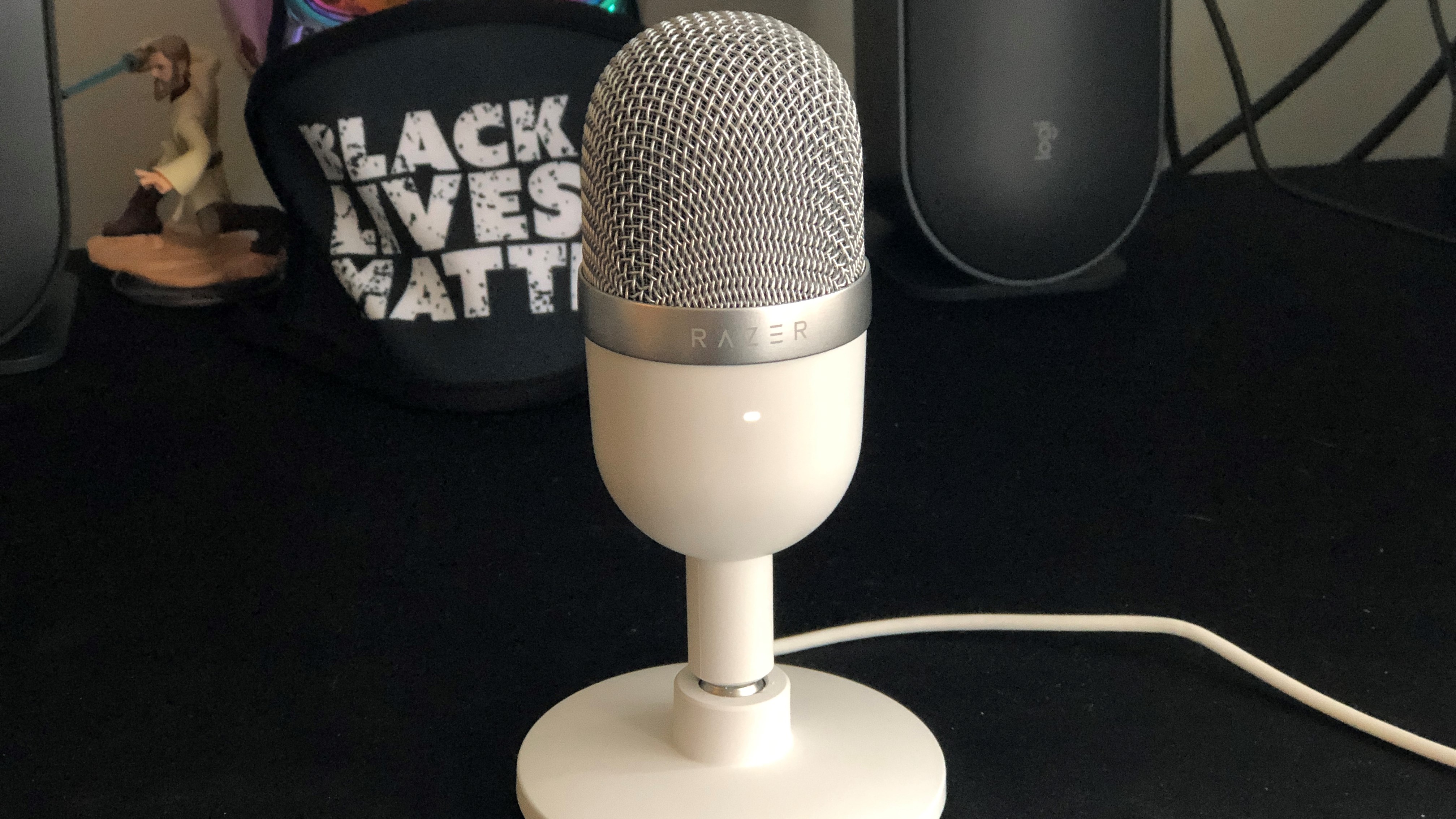
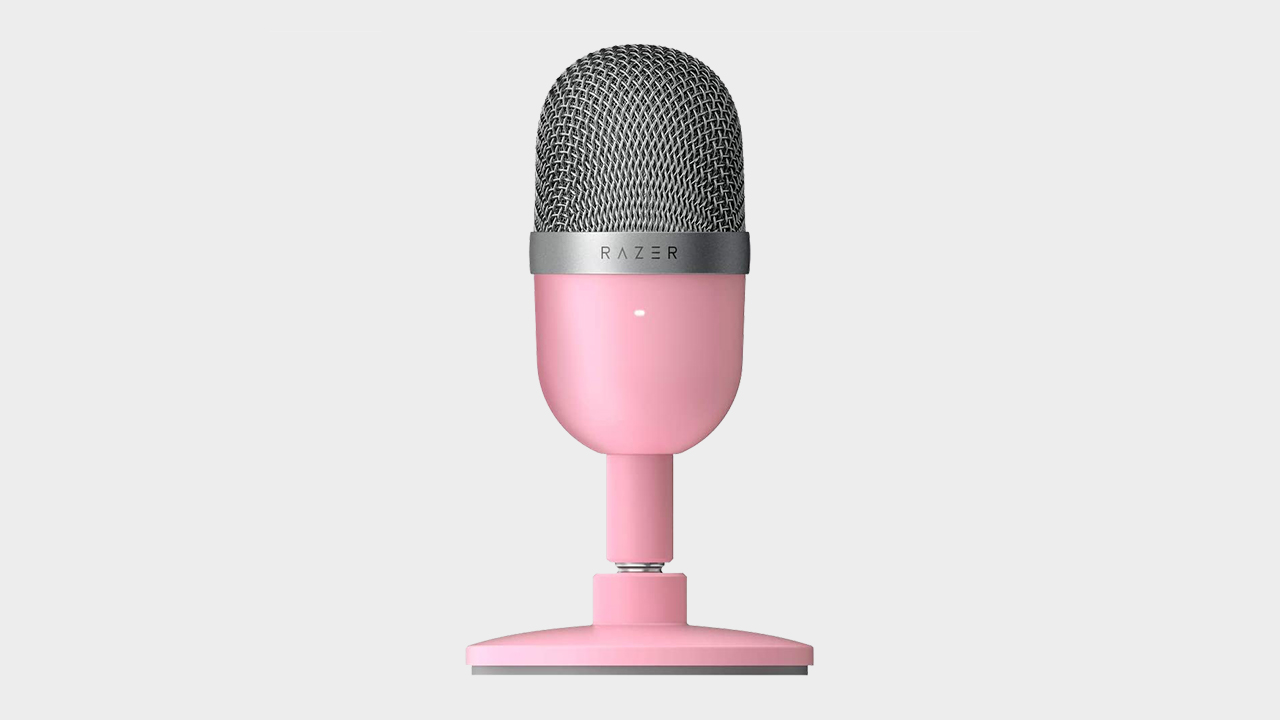
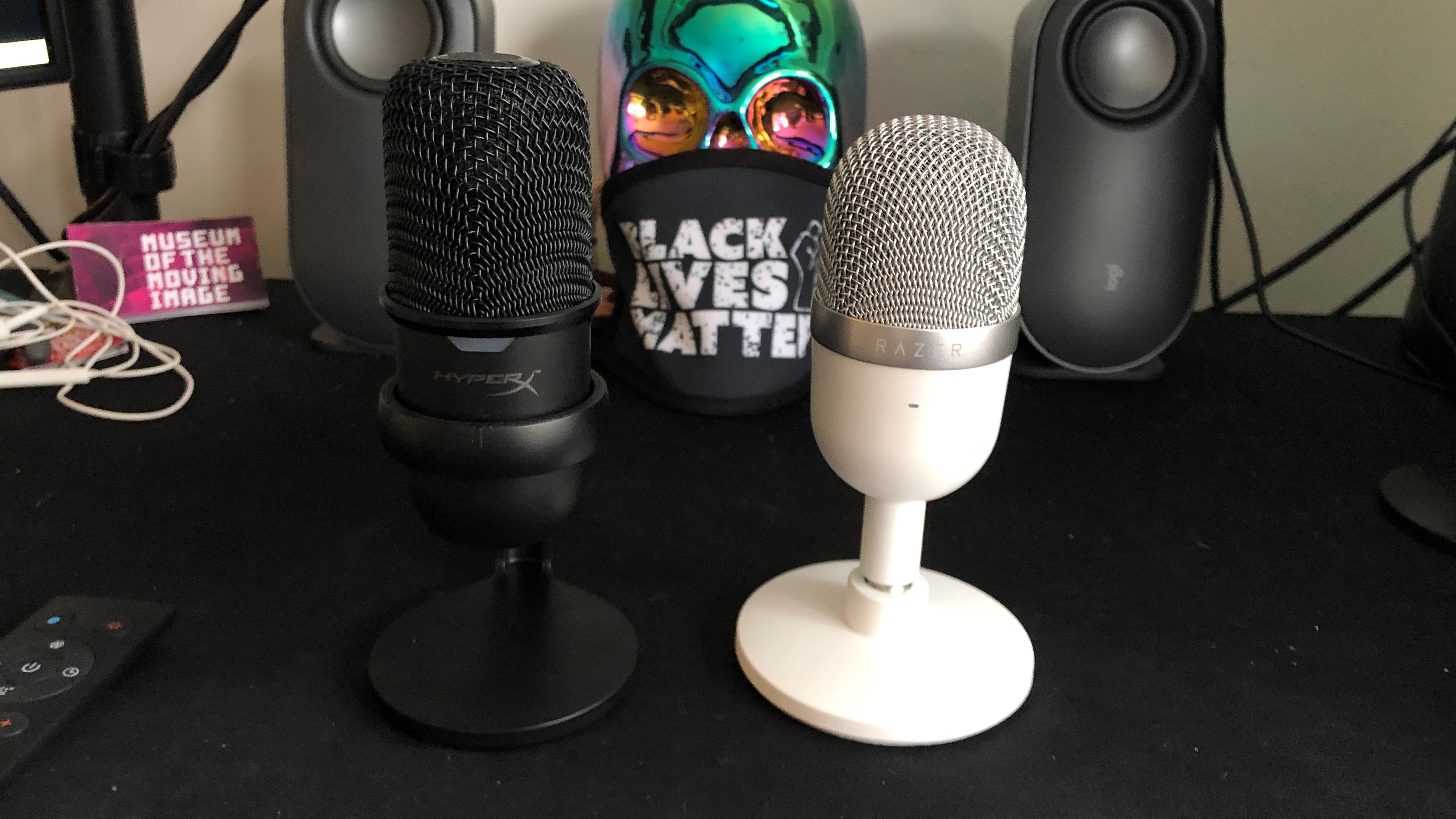
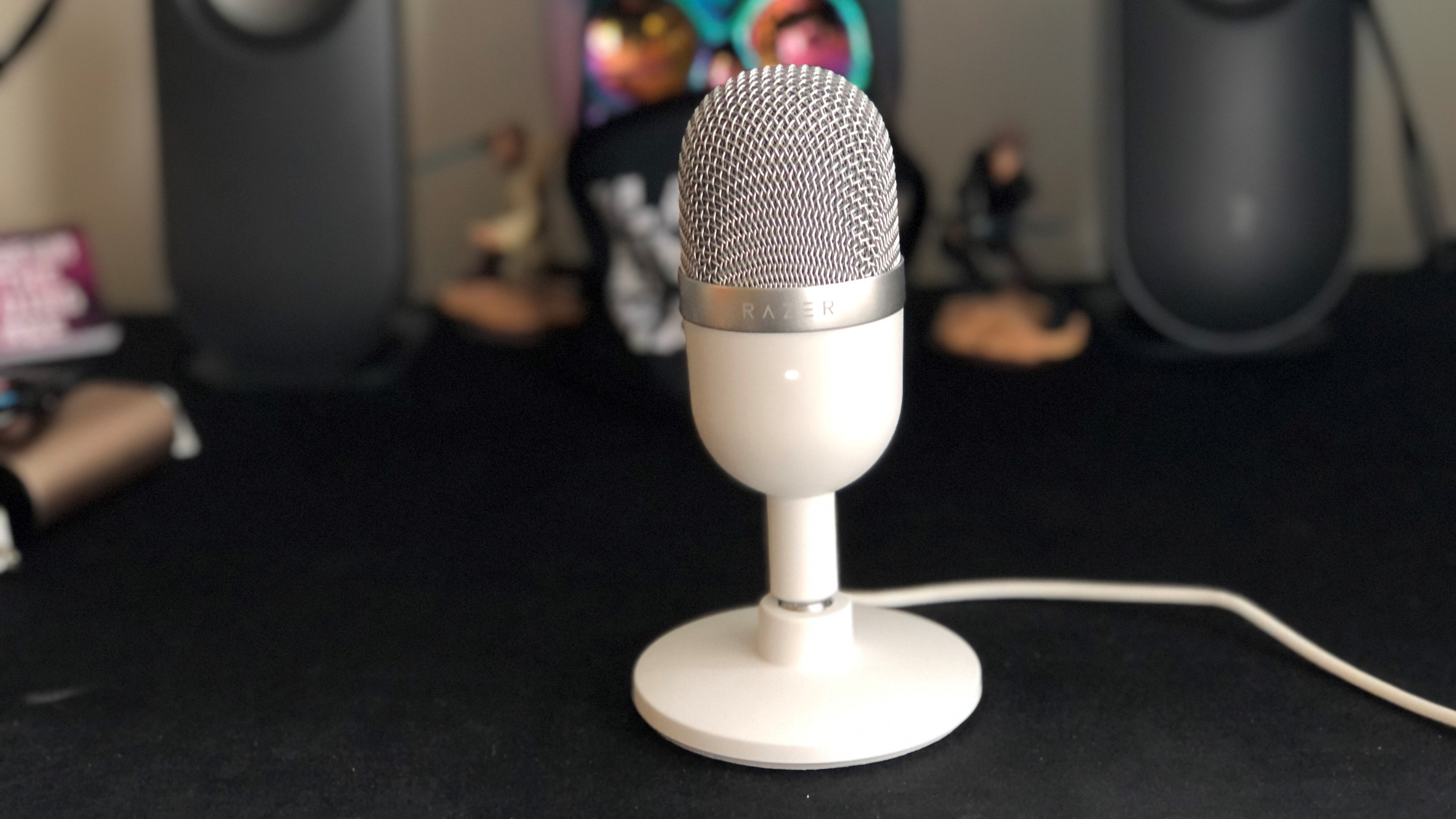
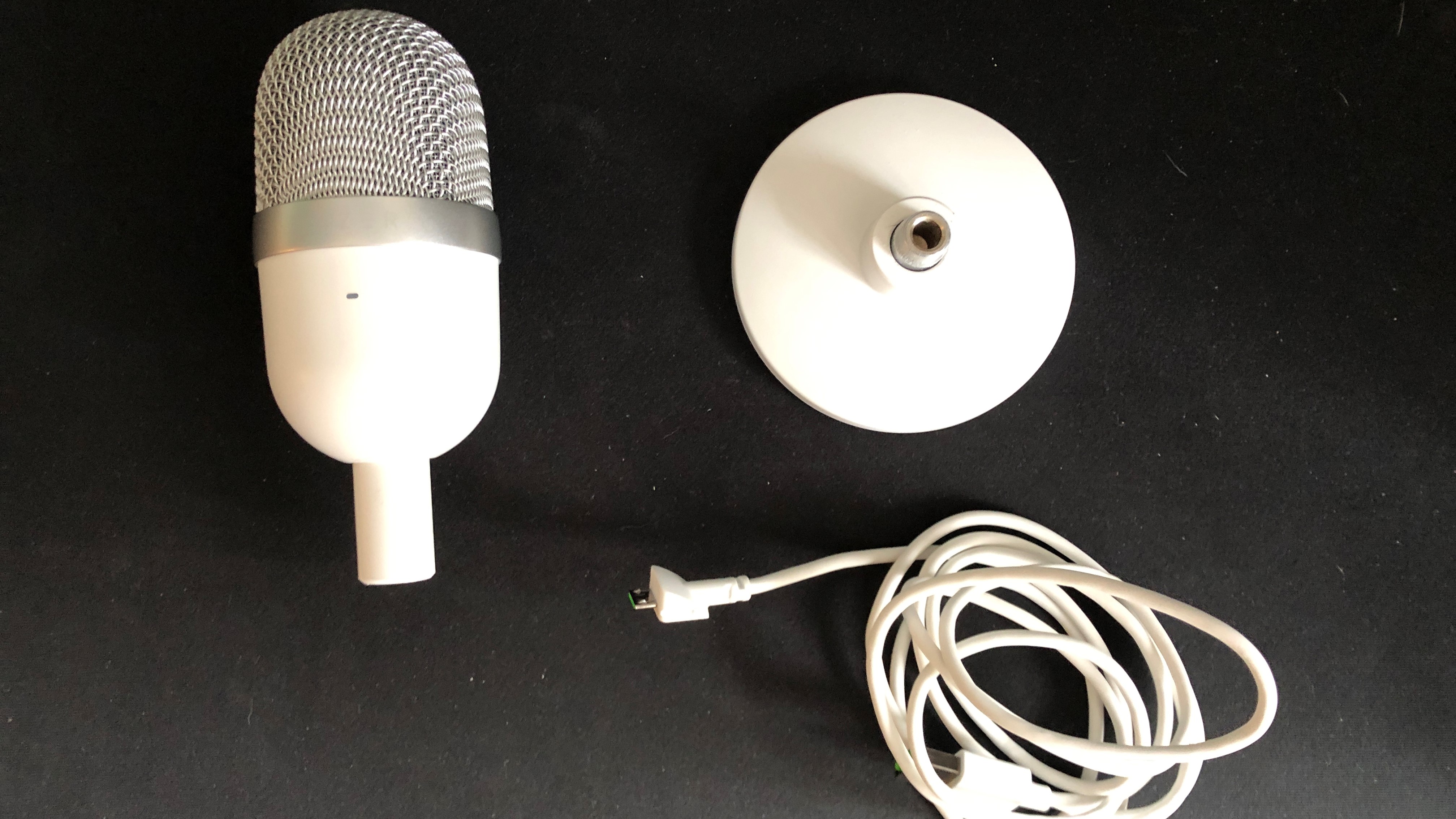
The Razer Seiren Mini is a $50 budget microphone for streaming that might skimp on features but still delivers top-notch sound.
The Seiren Mini's adorable pill-shaped design comes in your choice of Black, Mercury White, and Quartz (pink). Out of the budget mics out there, the Seiren Mini's design is the most eye-catching. I was sent a Mercury White microphone, and it's one of my favorite looking pieces of hardware I've gotten this year and pretty darn cute.
Much like the HyperX SoloCast, many features were stripped away from the Seiren Mini to keep the sound quality up and the cost down. There's no volume or gain dial, or even a mute button. It's bare-bones as they come, but for $50 it's to be expected.
The proprietary micro-USB cable Razer tends to use on many peripherals is a bit of a pain. It keeps you from using third party cables because they simply wont fit. I can't express enough how much I hate when a hardware company does this. If you lose that cable for whatever reason (which happens), the mic is useless until Razer's replacement arrives.
I would have loved to have seen a ⅝ to ⅜ thread adapter so it could mount on most boom arms but it doesn't have one, sadly. I like the tilting stand and built-in shock mount (a feature missing from the SoloCast), which is useful if you run a pretty animated stream where accidental bumps are everyday occurrences.
The Seiren Mini sounds just as good as Razer's more expensive Seiren offerings. The Mini's super-cardioid polar pattern does a better job of tapering down background noise to focus on what's in front of it, though it does sound a bit softer than the Seiren Emote at its default gain.
The Seiren Mini is a perfect entry for Razer's already reliable line of microphones. It's ultra-portable size and pricing gives streamers another good option for a budget microphone. The lack of a mute control and some other quality-of-life features will take some getting used to for any more pro folks, but they'll be aiming their sights higher up the product stack anyways.
The simple fact that the Mini, at just $50, sounds as good as its more expensive brethren will attract users who just want a simple mic that looks elegant and sounds excellent.
Read our full Razer Seiren Mini review.
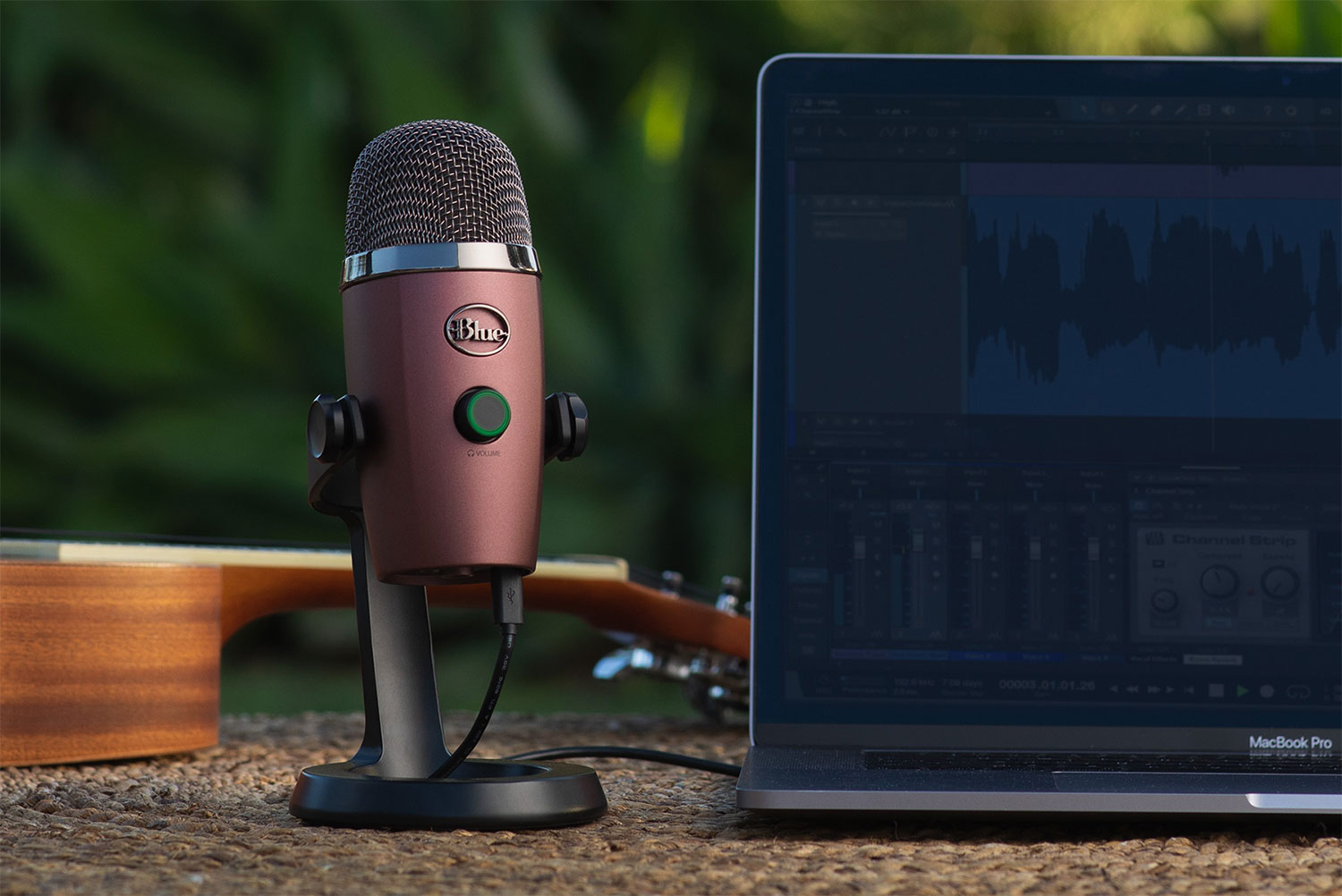
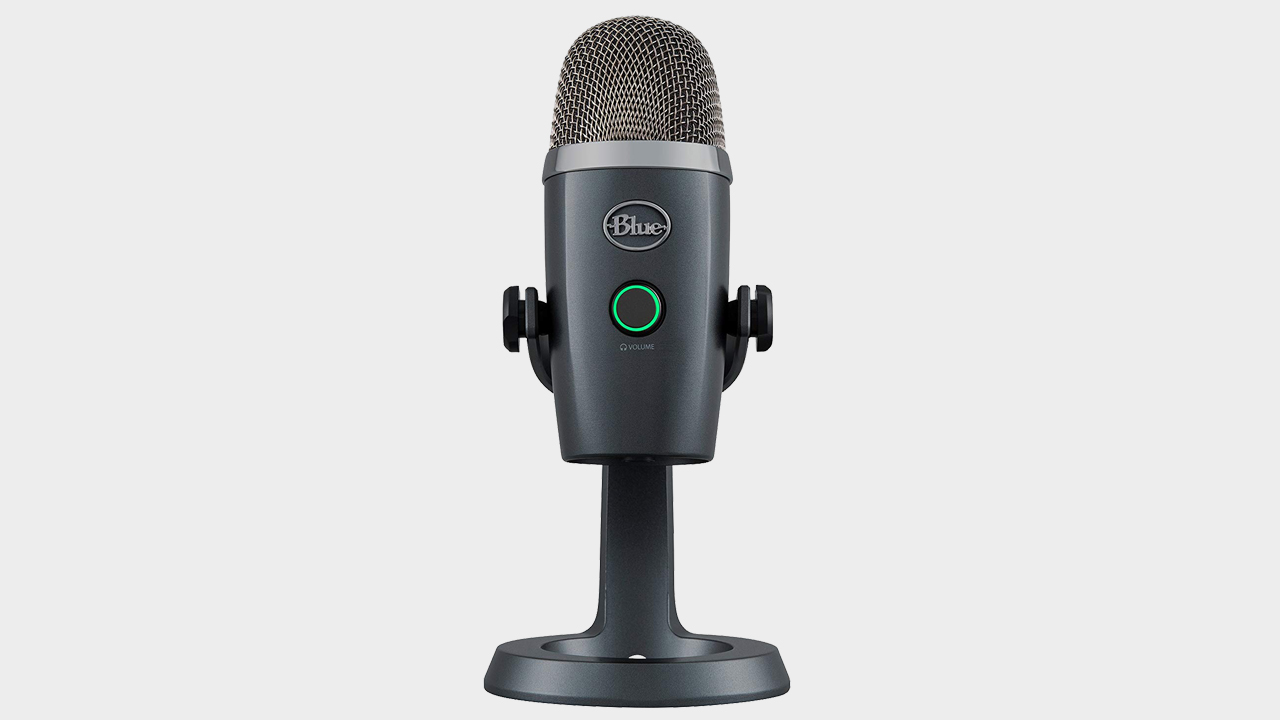
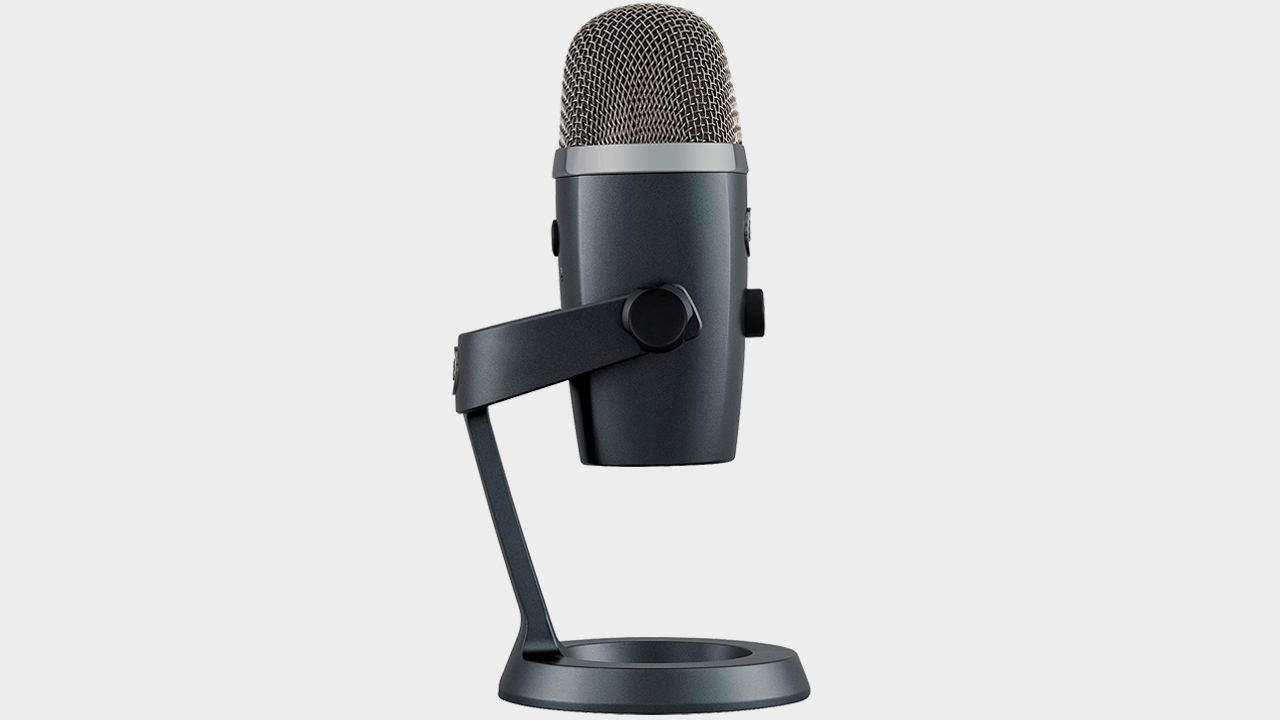
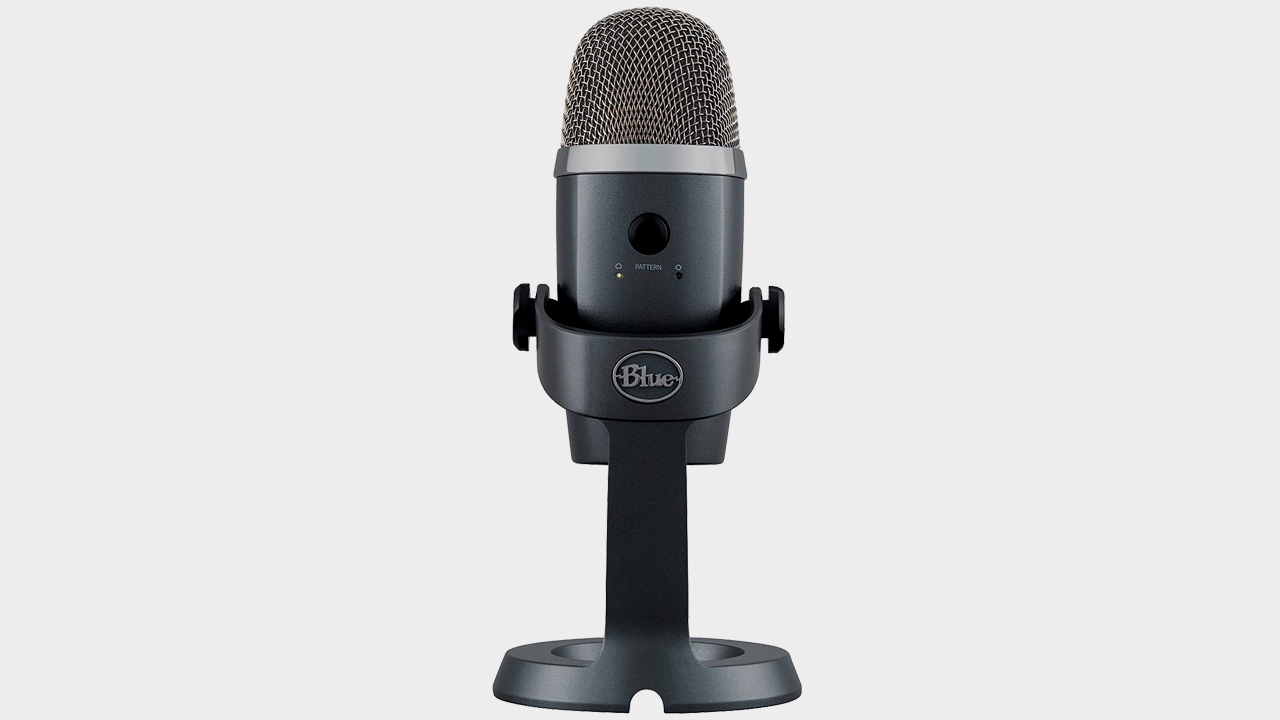
This miniature version of the classic Blue Yeti is the perfect microphone for those just starting with streaming. It has an excellent sound quality for a product under $100. Simultaneously, its tiny size and lightweight metal build make it easy to transport (this is at least 40% smaller than its larger cousin). The Yeti Nano sits as an outlier as the most 'expensive' budget mic on the list but offers more than the cheaper mics regarding features.
Its 24-bit, 48kHz recording sample rate is noticeable, too; audio from the Nano and original Yeti shows that the former is superior by a significant margin. It's only got two polar patterns (cardioid and omnidirectional), but the Yeti Nano makes up for it with everything else.
The Nano is a reliable microphone that travels well and still provides that stellar Blue Yeti sound you'd expect. Features-wise, the Yeti Nano isn't as sparse as other microphones on the list. The 3.5mm aux output is super helpful to hear exactly how you like it without the need of any software. The volume control for that output shares the same dial/button as the mute.
Things like gain control are handled through the Logitech G Hub software (RIP Blue Sherpa). Here you have a little more control over your mic settings without using any third-party broadcast software like xSplite or OBS. However, you can use those if you choose to opt out of using another type of hardware software; I don't blame you.
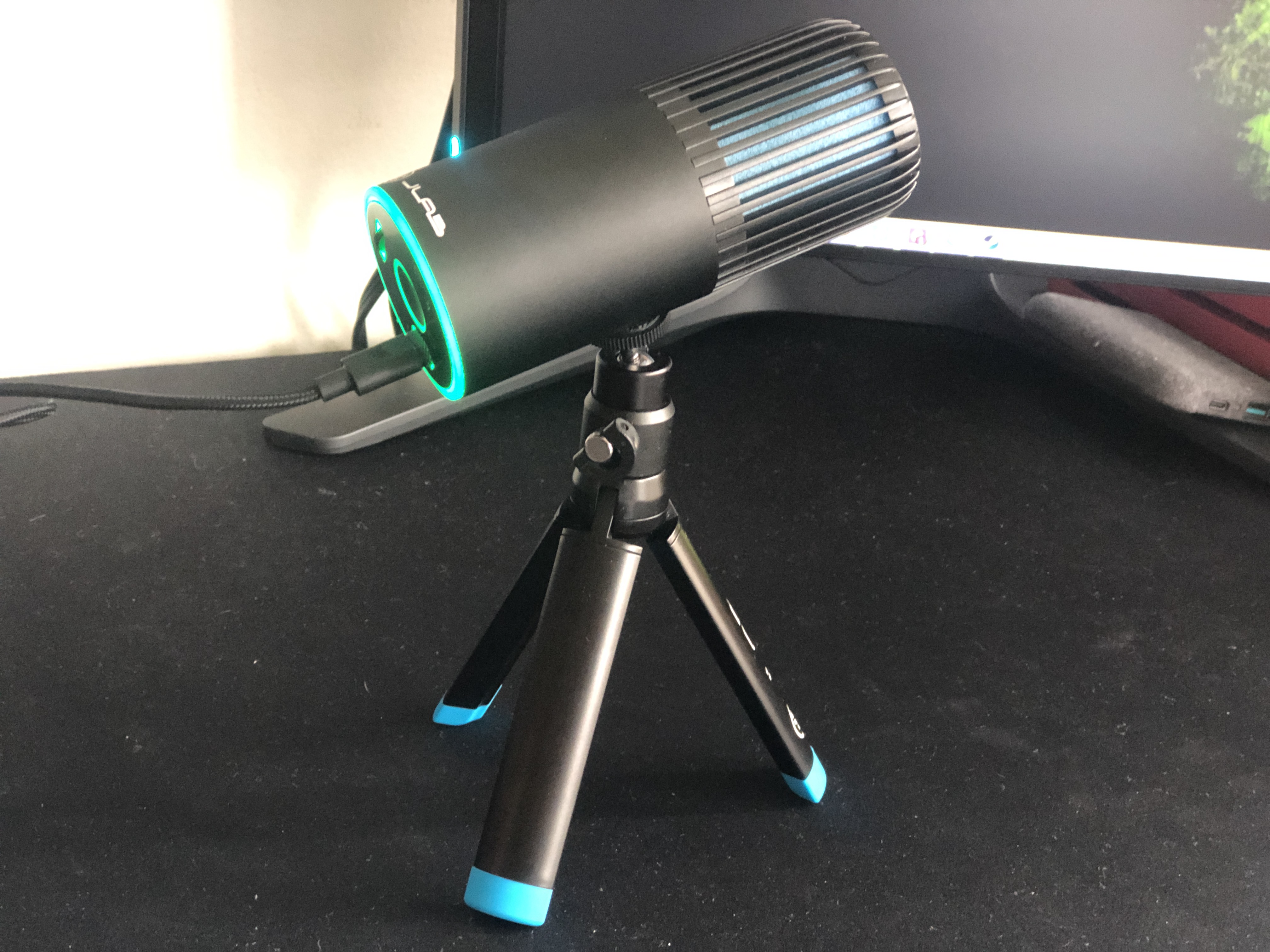
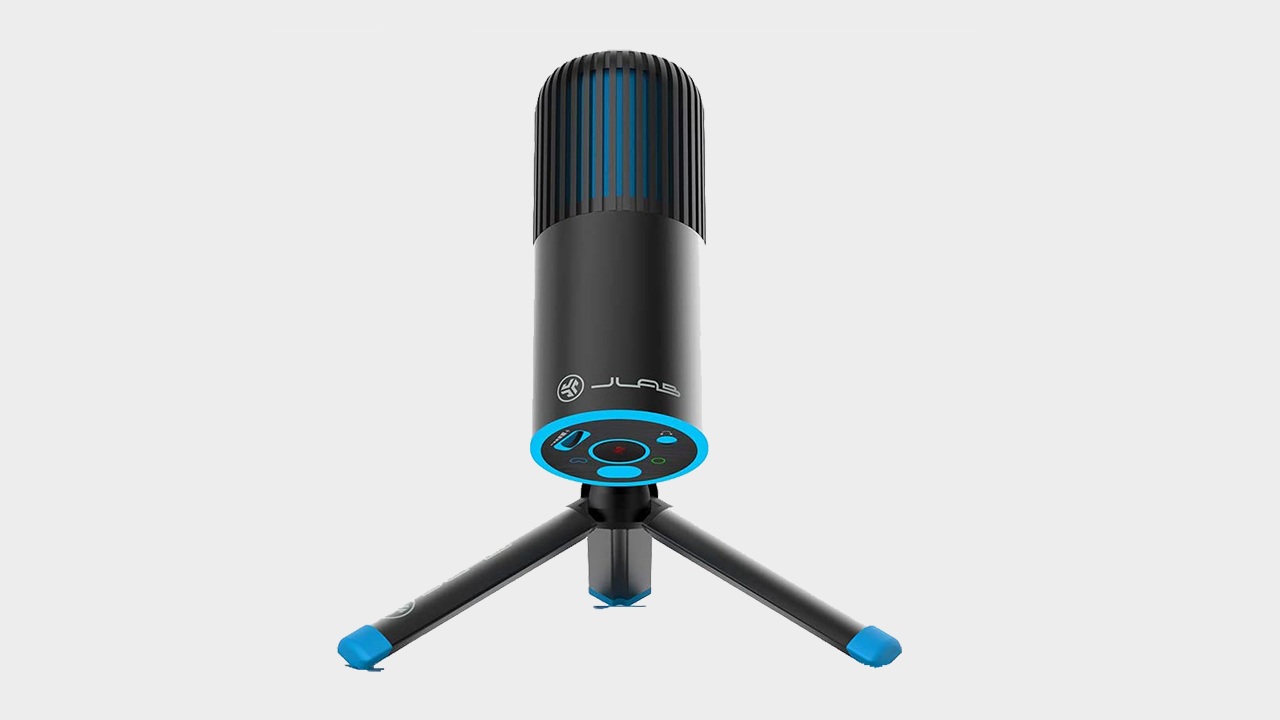
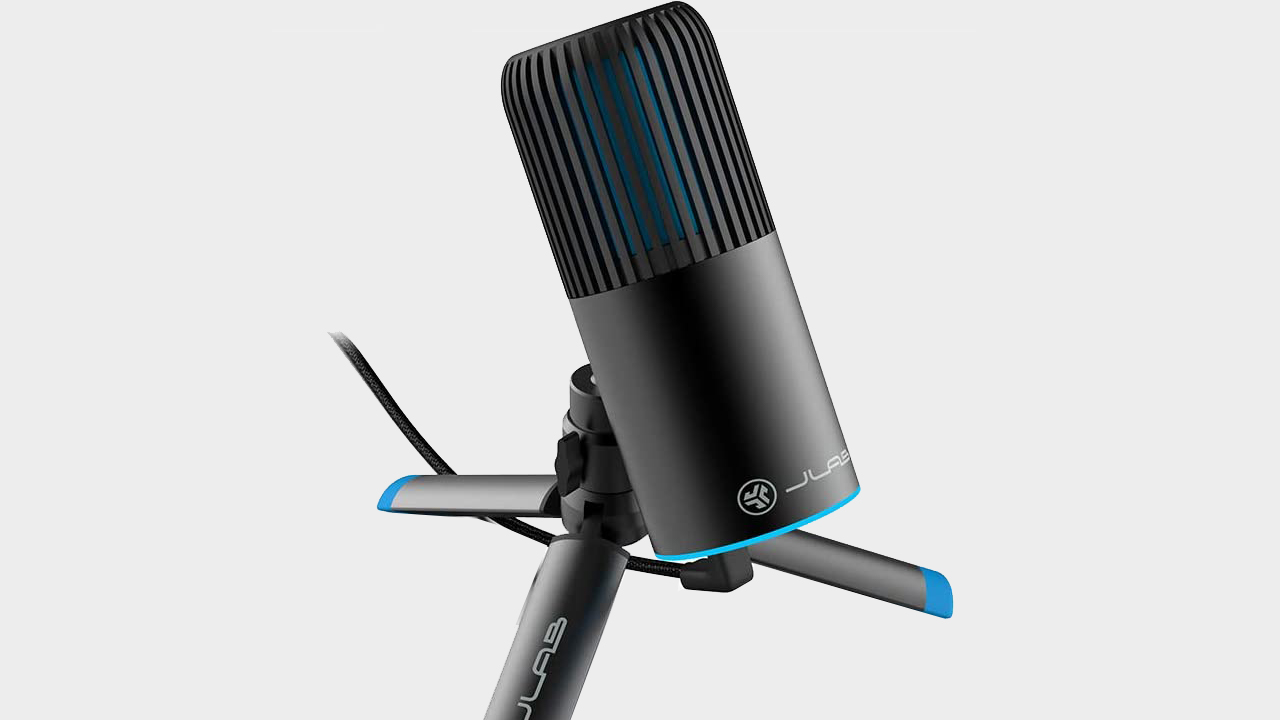
A relative newcomer to the scene, JLab Audio is probably best known for affordable audio products, such as budget headphones and speakers. Now it's trying its hand at microphones. The Talk GO comes in with two condensers and a resolution of 96kHz/24Bit. While the options for $100 + mics are vast, there are almost no viable options around this $50 price point.
It uses two directional patterns (cardioid and omnidirectional). Cardioid is no surprise, but seeing omnidirectional is a welcome surprise for a microphone at this level. This means you can plop down the GO in the middle of the table for group interviews or panel discussions.
The plug and play microphone and accompanying tripod weighs in at just under a pound; the GO sure is a lightweight mic. The hard plastic chassis gives me some concern about its durability over long term use and travel, and maybe a smart idea would have been including a travel case or pouch, but then that would add to the price.
The Talk GO's unobtrusive size makes it ideal for small spaces, which is especially useful in case your desk can't accommodate a boom arm.
The powder blue accents, along with the bright light wheel, makes for a fresh design. Aside from looking dope, the light wheel lets you know what directional pattern mode you're using.
Blue means cardioid; green is omnidirectional, and red being mute. Holding down the mute button is how you switch patterns and has so far proved pretty noob proof, which is all you can ask. All of the Talk series microphones have a simple sleekness to them that I don't hate.
The Talk GO will surprise a lot of folks by virtue of it not sounding too bad despite having just two condensers. When I recorded some lines, my voice was more tinny than I would prefer, and my Ps popped an awful lot. For everyday use, such as conference calls or podcasting, it's okay, but if you're looking crisp clearer vocals for music performers, you are going to have to expand your budget upgrade to the Talk PRO.
The JLab Audio Talk GO is probably the only $50 USB microphone you can buy aside from the aging Blue Snowball ICE (if you can find one) that's worth a damn. If you're starting as a content creator with a tight budget, you go do a lot worse than the Talk GO's size, sound, and price.
Read our review of the JLab Talk GO.
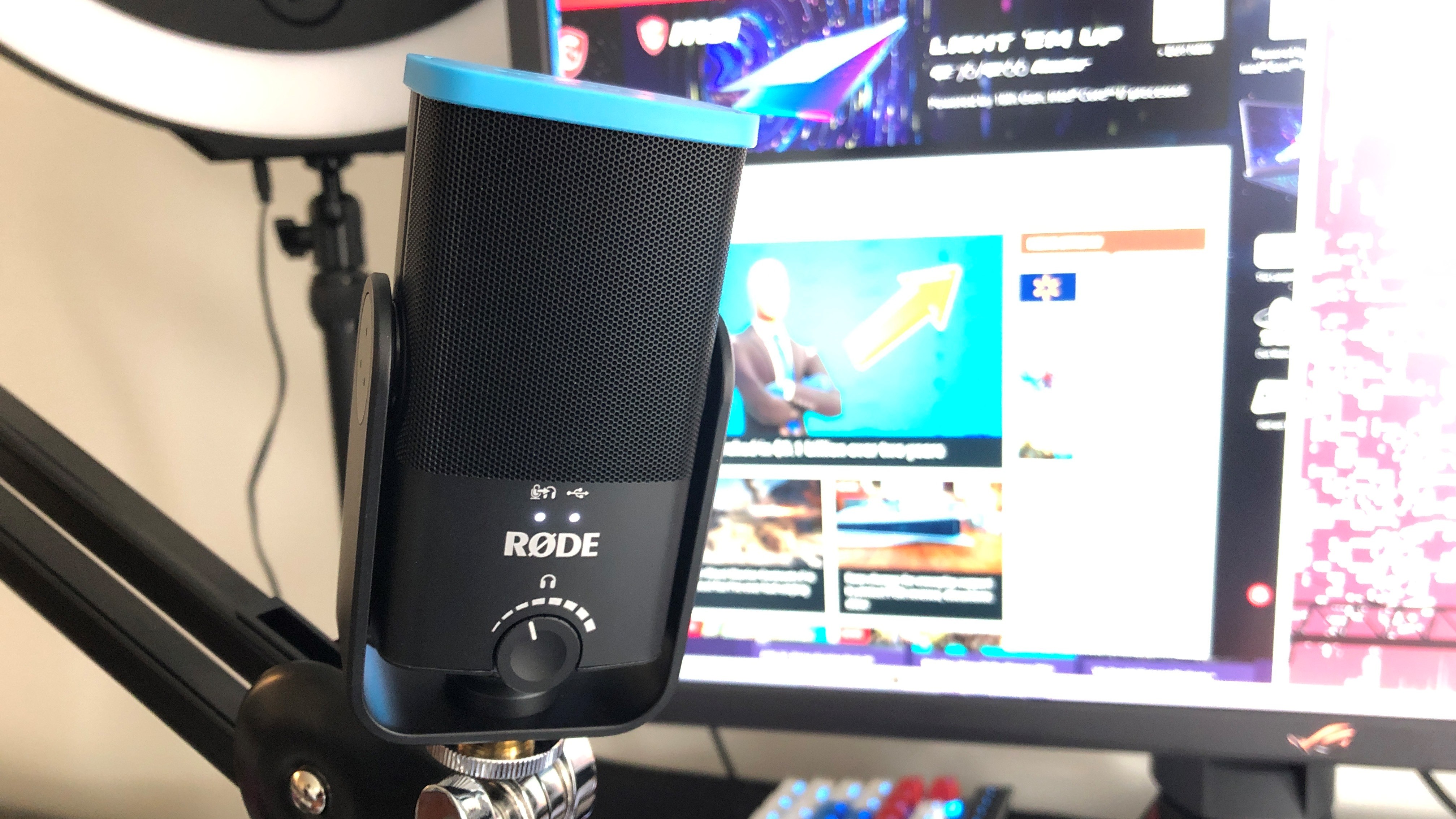
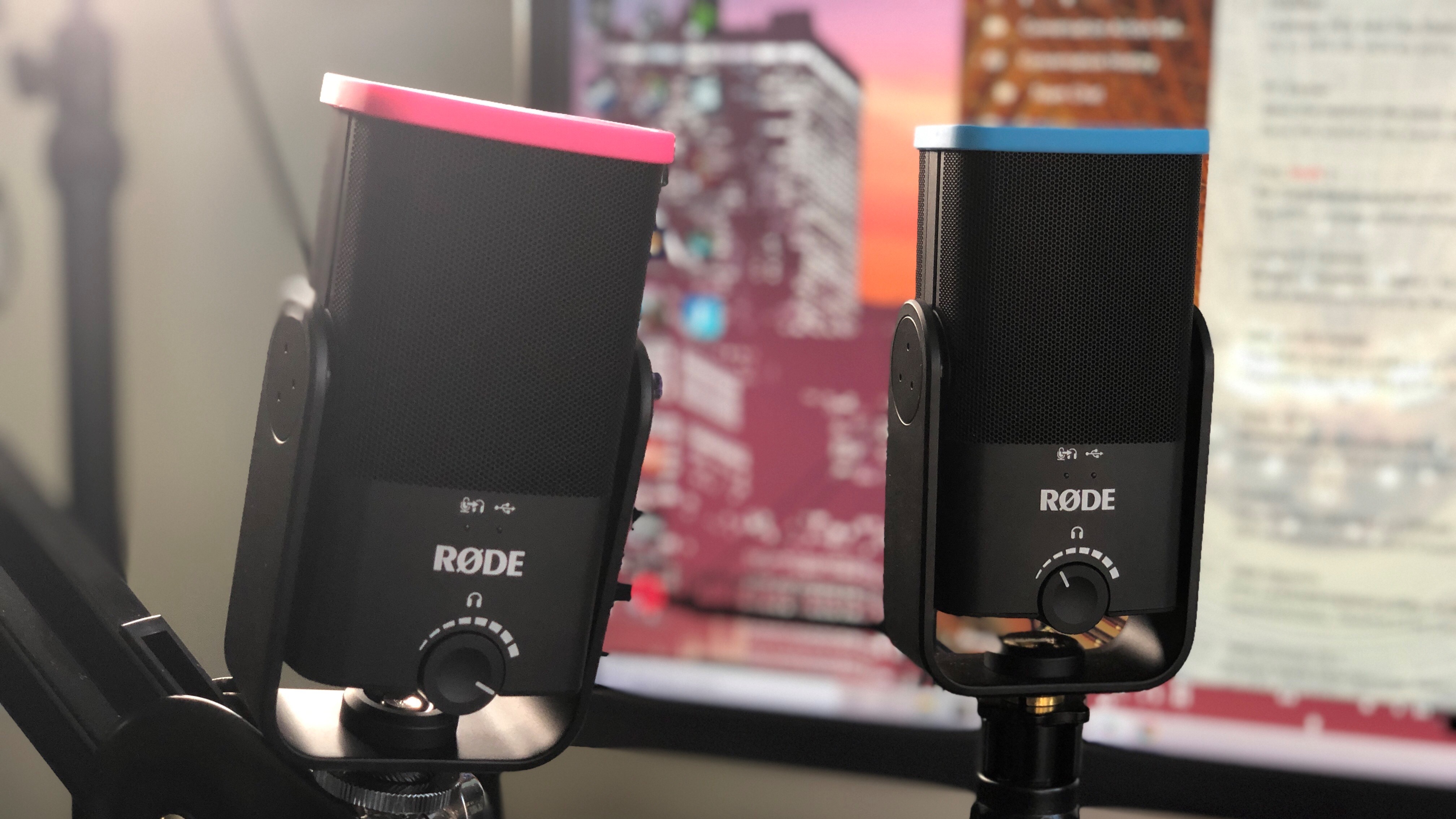
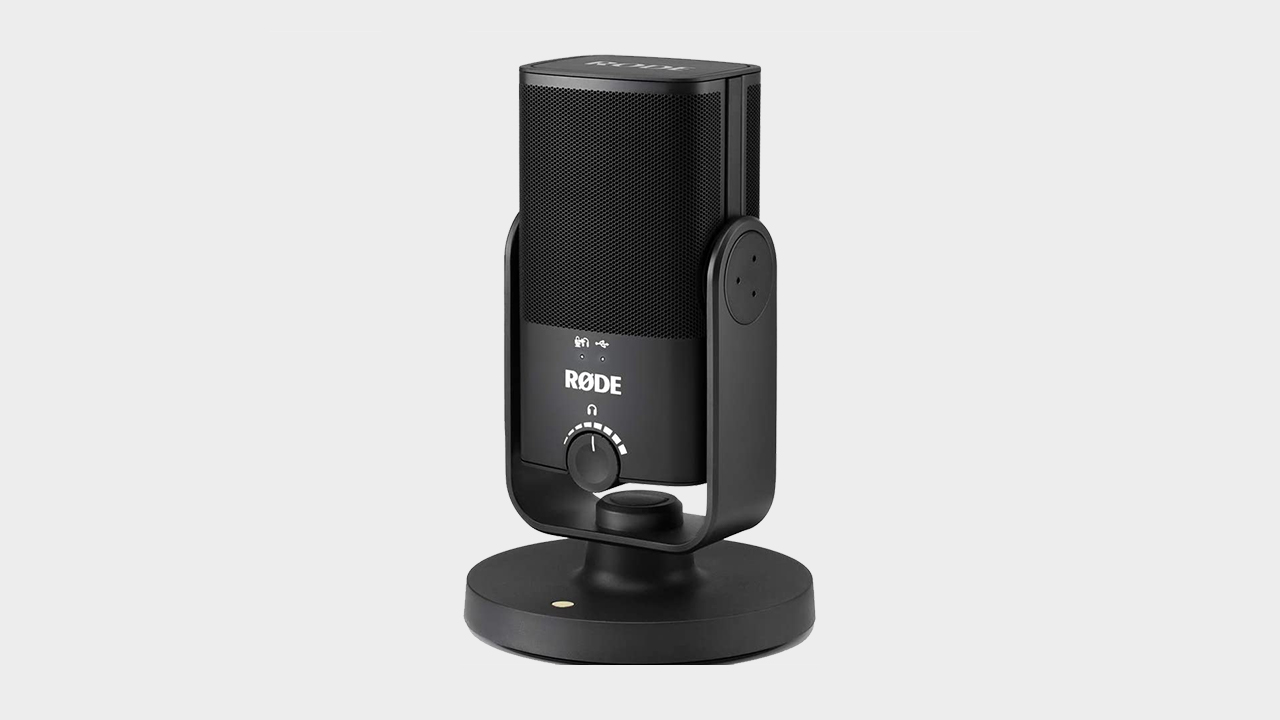
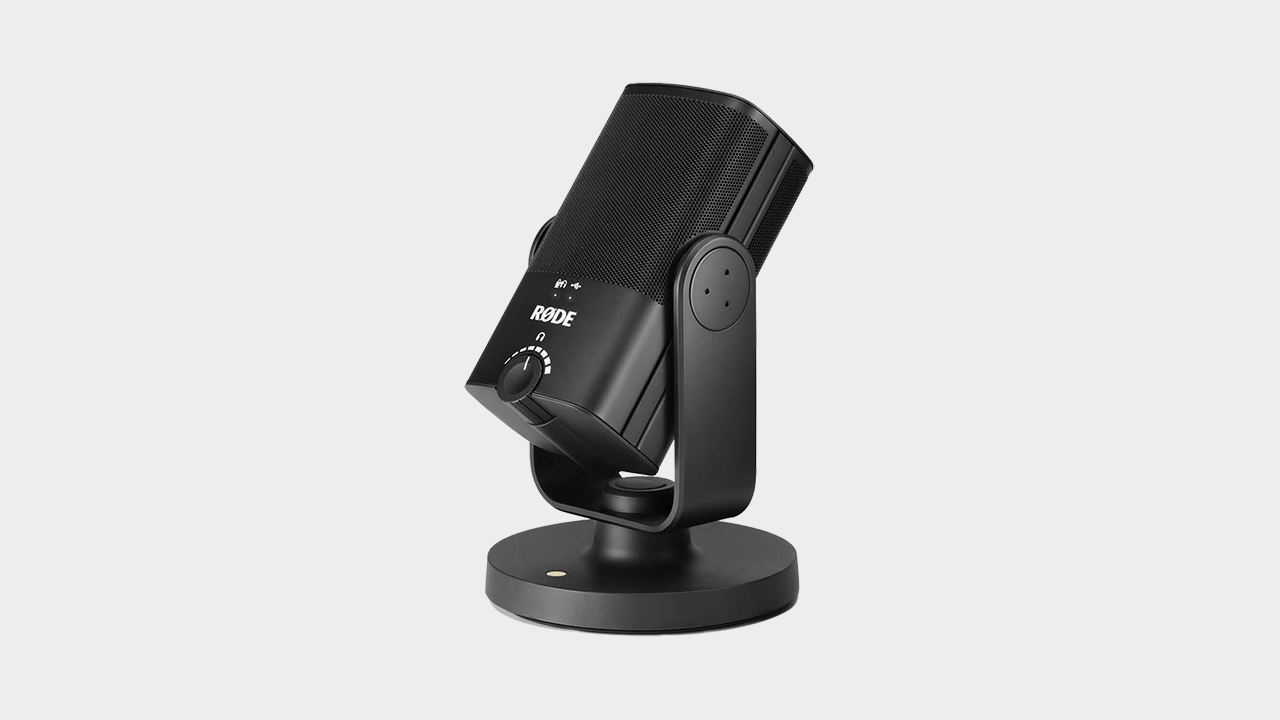
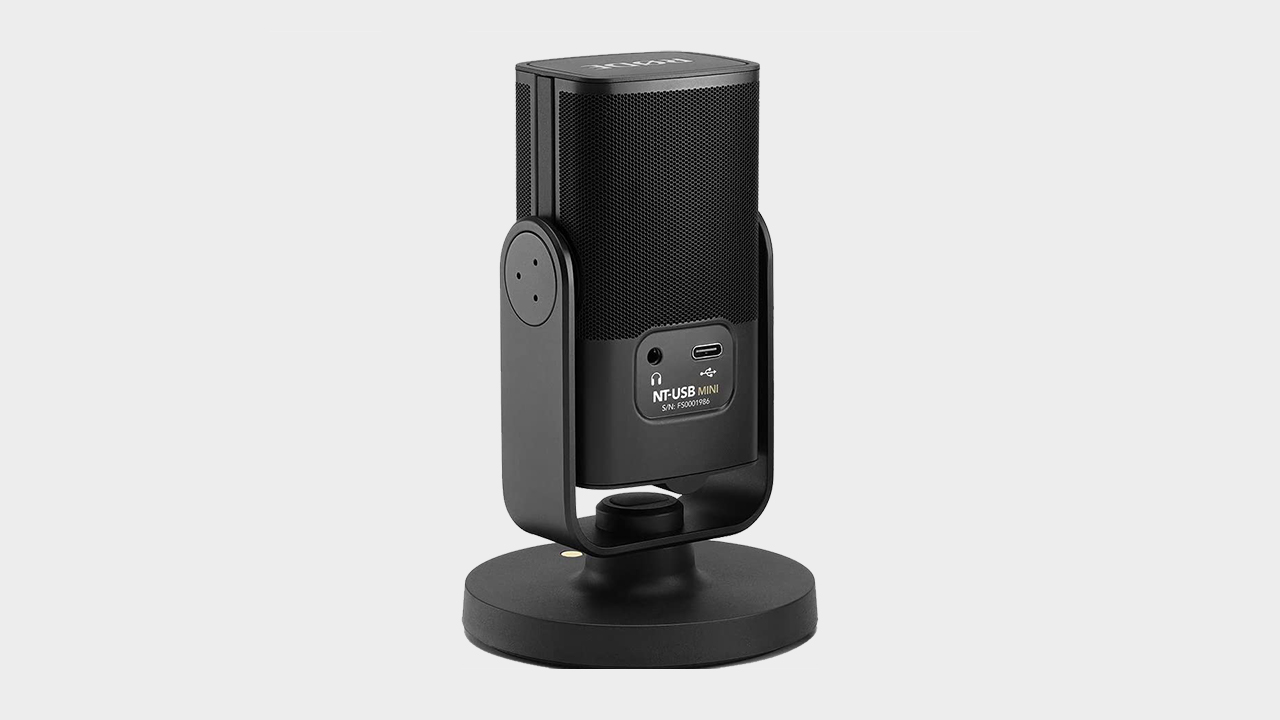
Rode makes quality microphones. No question. The only problem is, its prosumer audio often requires a bit of financial investment. The Rode NT-USB Mini microphone is hand down one of the best sub-$100 mics you can pick up right now.
Taking cues from smaller mics like the Razer Seiren Mini, Rode has stripped a lot of the usual features in the standard mic for a more no-fuss, no-muss design approach. The Mini has a built-in pop filter to deal with your plosives and a neat little detachable magnetic stand that enables easy traveling.
Zero-latency monitoring mode removes the delay of your voice in playback. That's important because it can be super distracting to hear your own voice a few milliseconds after speaking, depending on your setup. This deals with all that rather well.
Rode has always been known for its top-tier audio gear. It is often a strong recommendation for anyone looking to upgrade from semi-pro to pro streaming or podcasting status. However, the cost has always been a sticking point since Rode's gear has always been traditionally skewed towards the serious prosumer. The Mini's $100 price makes it a good choice for anyone looking for a quality microphone that travels well and keeps its traditional Rode durability.
From the test recordings, you can hear that the quality of the mic is good, if not better, than more expensive microphones on the market. My audio came out crisp and clear, though I did pick up some of the background hum of my very loud gaming PC. For comparison, I've included some cheaper mics like HyperX Solocast, which is $40 cheaper than the NT, and a couple of premium mics just to hear the difference.
Aside from sounding incredible, the NT Mini is an easy-to-use mic that any beginner can use. Speaking of easy, the Rode Connect software is a digital mixer that actually allows for up to four NT Minis to be plugged into a single computer without jumping through any hoops. It follows the same design philosophy as the other mini mics on this list by being compact, traveling well, and looking like a cool piece of tech.
Read our full Rode NT Mini review.
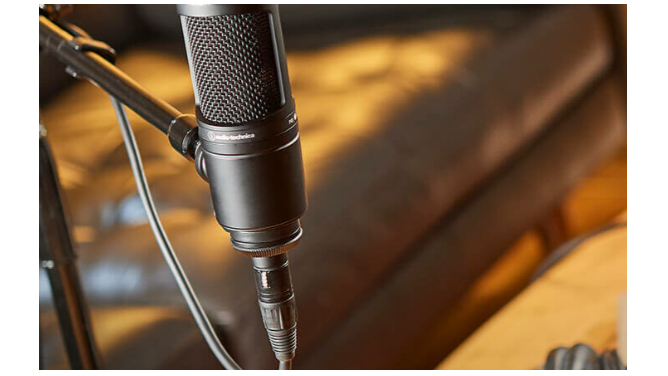
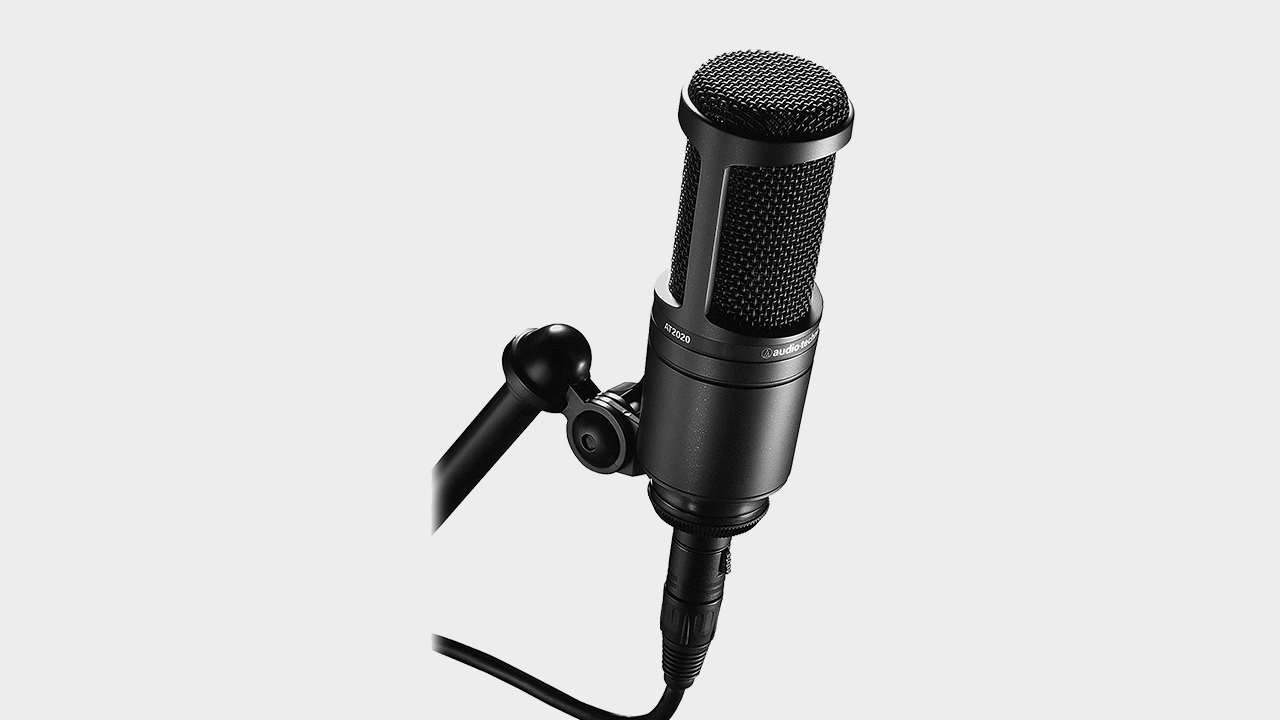
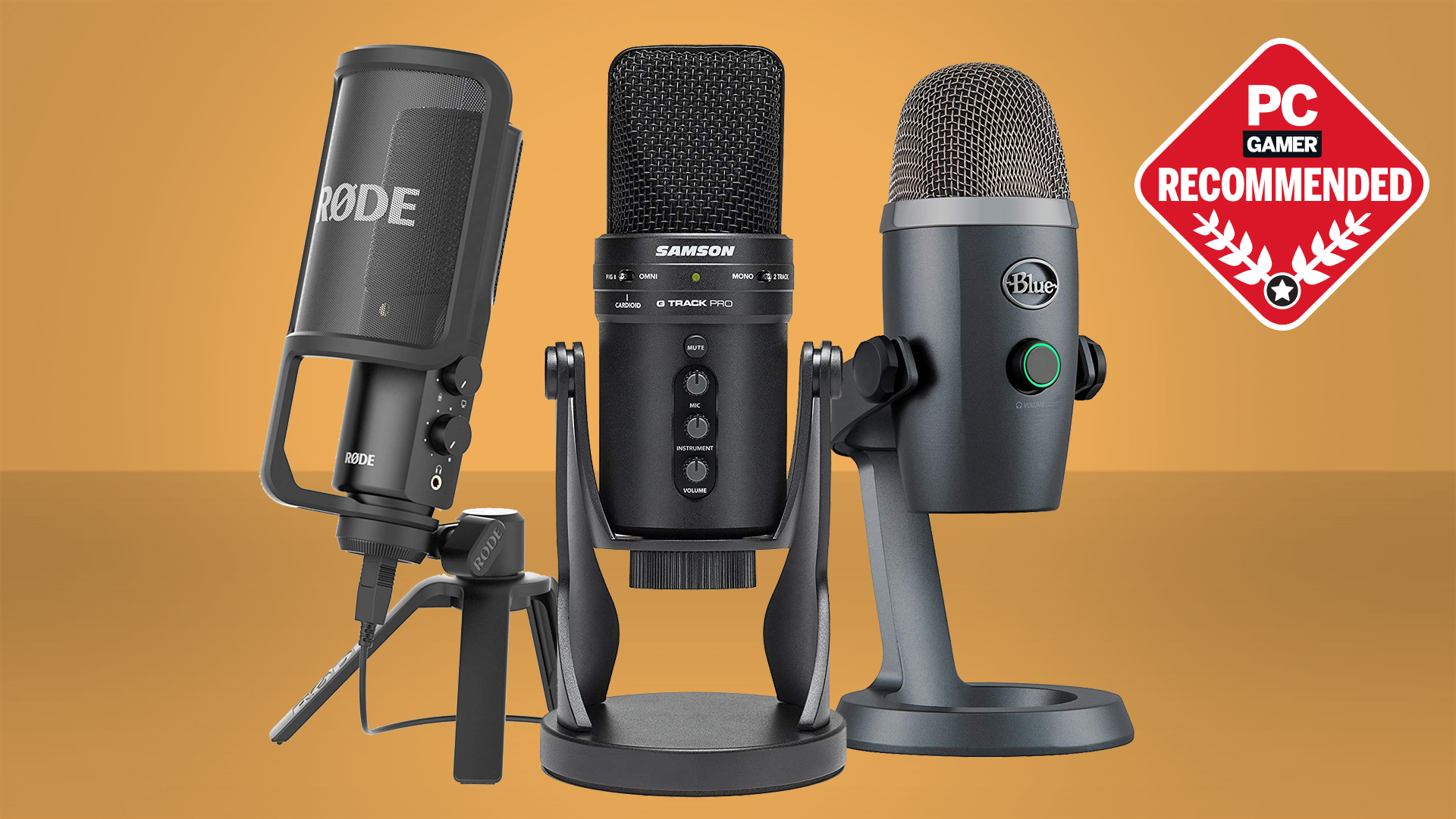
Best microphone for gaming: make sure you're heard
Best webcams: be seen while you get your stream on
Best capture cards: lessen the load with a dedicated card
Audio-Technica AT2020 might be the best cheap XLR microphone you can get your hands on right now. Any professional musician will tell you that trying to find a good XLR mic for less than $200 is a massive chore. Somehow, Audio-Technica manages to provide an excellent sounding XLR microphone for musicians for around $80.
The AT2020 follows the trend of stripping out features to cut costs. Here the mute button is absent, although you still have headset volume, monitor dials, a pivoting threaded stand mount, and a handy travel bag. Whenever you record yourself using the AT2020, you'll often think you're using a more expensive microphone.
So whether you're banging away on drums or explaining your latest win in Call of Duty Warzone for your adoring viewers, the AT2020 is a highly versatile microphone. Since it is an XLR microphone, you need to invest in an audio interface (which you can find as cheap as $50 online) to use on your PC. If you can't be bothered with an audio interface, for an extra $50, you can pick the AT2020USB+, which as you may guess features a USB interface instead.
Best gaming headset | Best gaming monitor | Best HDMI cable for gaming
Best computer speakers | Best SSD for gaming | Best CPU for gaming
Budget microphones FAQ
What are a mic's polar patterns?
The polar pattern is the way a mic captures the sound around it. These are the most common polar patterns:
Cardioid: Records in front of the microphone. Perfect for voice-over, vocals, and streaming.
Bidirectional: Captures audio in front of and behind the mic. Ideal for one-on-one interviews.
Omnidirectional: Picks up sound from every direction. Perfect for round-table interviews.
Stereo: Perfect for ASMR recordings. YouTube 'ASMR' if you want the best example because I couldn't do it just justice.
Is a gaming microphone worth it?
You can always make do with the stalk mic sticking out of your gaming headset, but there are very few that can come close to matching the recording quality of even the cheapest gaming mic on this list. If you're planning on streaming or recording your gaming, and what to add your own voice to the mix, then making yourself sound better than your weedy headset microphone is surely a must.
Having a good mic will also mean you don't have to use a gaming headset at all. For us audiophiles who prefer a great set of headphones that come without a mic at all, a desk-based option is the only way to roll.
What form factor should my mic be?
This isn't a fashion show, but the form factor is still something that matters. In the case of a standing mic, you'll be staring at it every time you're sitting at your desk—and attachable mics need to make sure they aren't too distracting either.
A mic's form factor can also play a role in how adaptable it is, as you'll need to make space for it. We used every mic in multiple settings with different PCs, keyboards, and monitors, getting a feel for how they looked and performed in each environment. As a streamer, your mic will also be in view for your audience, so its appearance is relevant.

Post a Comment